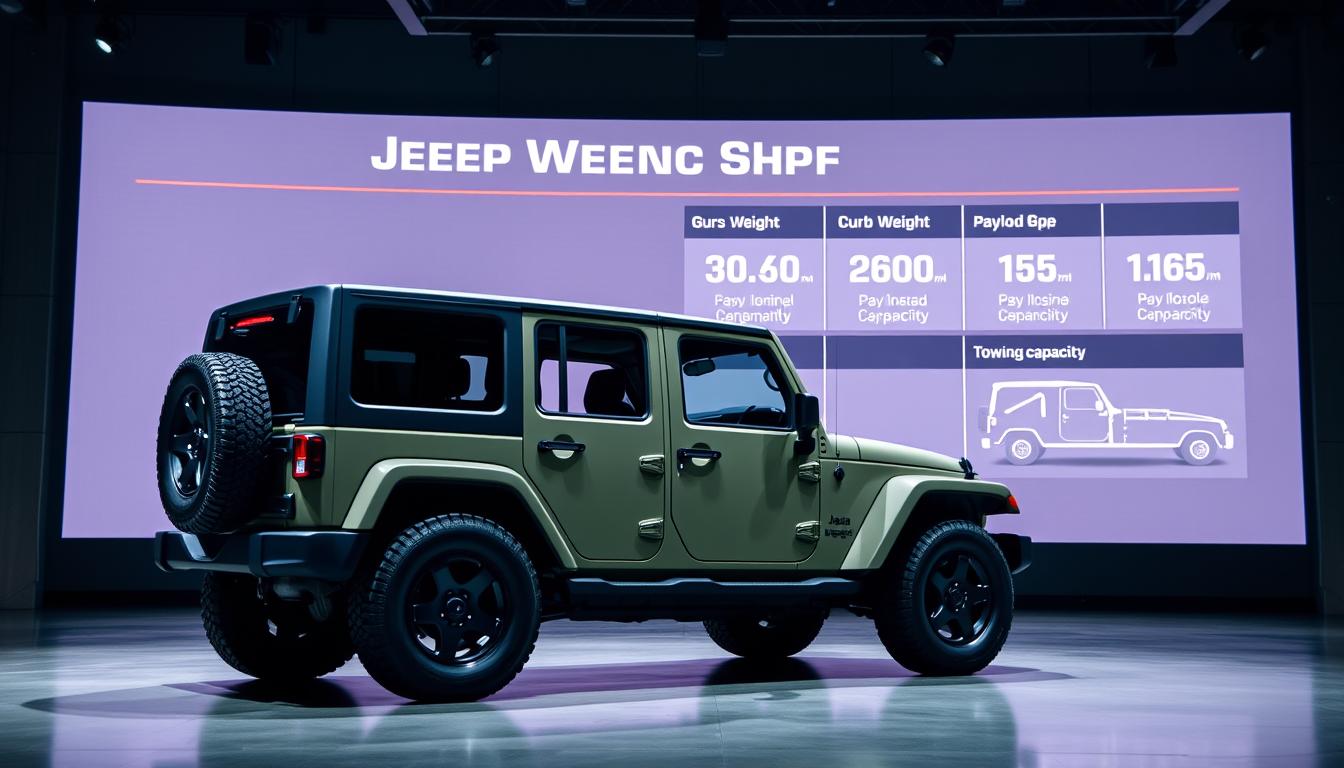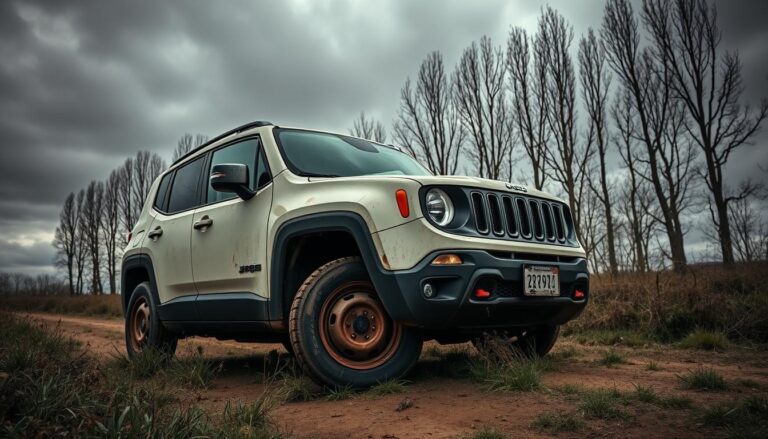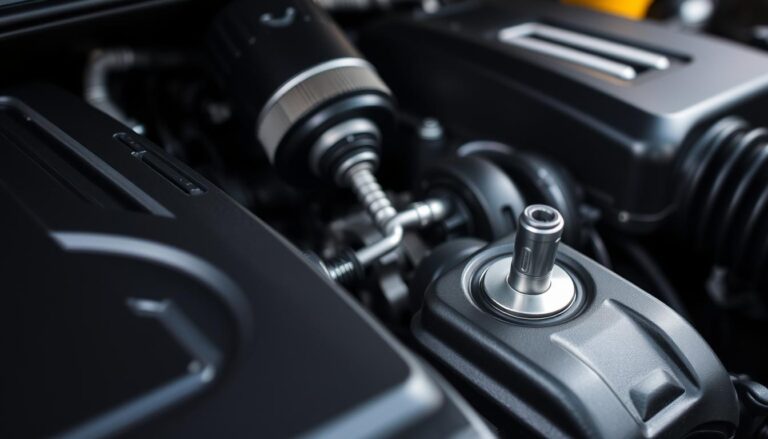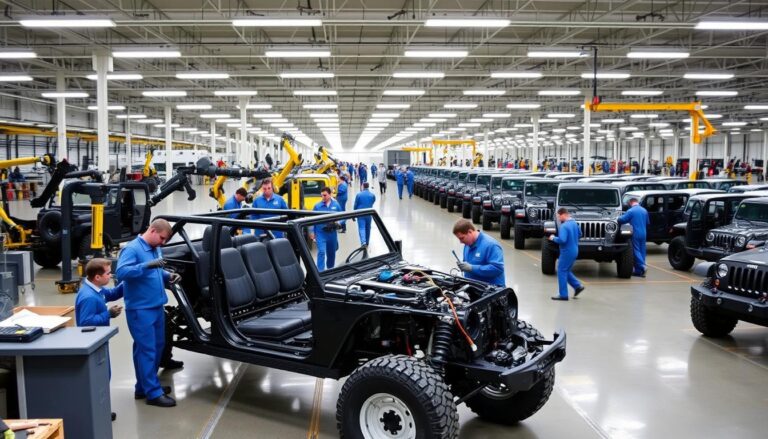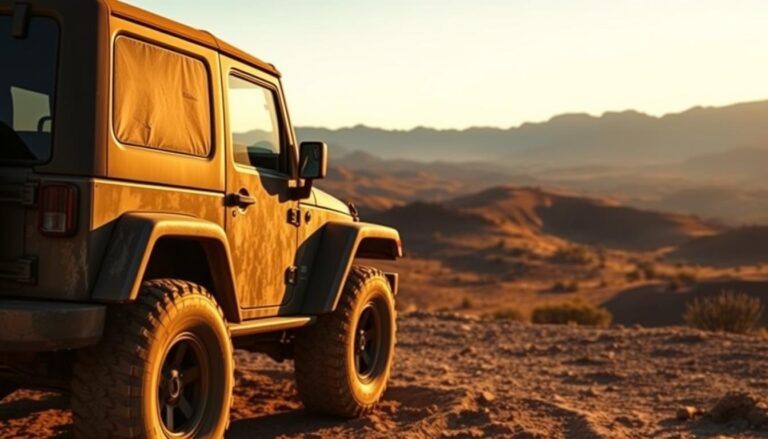Jeep Wrangler Weight: What You Need to Know
Choosing the right off-road vehicle means knowing the Jeep Wrangler’s weight. This weight affects its performance, fuel use, and how it handles. It’s key to understand how much a Jeep Wrangler weighs to enjoy its full capabilities.
Knowing the Jeep Wrangler’s weight is more than just a number. It’s about understanding its full range of possibilities. The weight changes with different setups, impacting speed, cargo space, and more. Whether for weekend trips or daily drives, the weight matters a lot.
Each new Wrangler generation has its own weight story. Things like trim level, doors, and extra features can add or subtract hundreds of pounds. For those who love driving fast or exploring rough terrain, knowing the weight is essential.
The Jeep Wrangler is known for being versatile, thanks to its weight. Makers have worked hard to get the weight just right. This balance of strength, speed, and efficiency is what makes each Wrangler special.
Thinking about the Jeep Wrangler’s weight is important for many reasons. It affects how much fuel it uses, how easy it is to modify, and your overall driving experience. Knowing this helps you choose the right Wrangler for you.
This guide will dive into the weight aspects of the Jeep Wrangler. We’ll look at how different factors affect its performance and capabilities. You’ll learn about weight classes, changes through the years, and how these impact your driving experience.
Jeep Wrangler Weight Classifications
Knowing about Jeep Wrangler specifications is key. The weight of a vehicle affects its performance, safety, and what it can do. Let’s look at the important weights that show what the Jeep Wrangler can handle.
Curb Weight vs. Gross Vehicle Weight Rating
There are two main weights to know for a Jeep Wrangler:
- Curb Weight: This is the weight of the vehicle alone, without anyone or anything inside.
- Gross Vehicle Weight Rating (GVWR): This is the total weight the vehicle can carry, including itself, people, and stuff.
Knowing these weights helps drivers decide how much to load and how it will affect the vehicle’s performance.
Payload Capacity Explained
Payload capacity is how much weight a Jeep Wrangler can safely carry. This includes people, tools, and extra stuff. The payload varies from 1,000 to 1,500 pounds, depending on the model.
| Wrangler Model | Payload Capacity | Recommended Limit |
|---|---|---|
| 2-Door Sport | 1,000 lbs | Safe for light loads |
| 4-Door Rubicon | 1,500 lbs | Ideal for heavy equipment |
Towing Capacity Considerations
Towing capacity is linked to the Wrangler’s weight. Different models can tow different amounts:
- Two-door models can tow 2,000 pounds.
- Four-door models can tow up to 3,500 pounds.
- Rubicon models can tow even more.
Drivers need to think about how much weight the trailer has and how it will affect towing. This ensures a safe towing experience.
How Much Does a Jeep Wrangler Weigh?
Understanding the jeep wrangler curb weight is key for buyers and off-road fans. The weight changes a lot based on the model and setup.
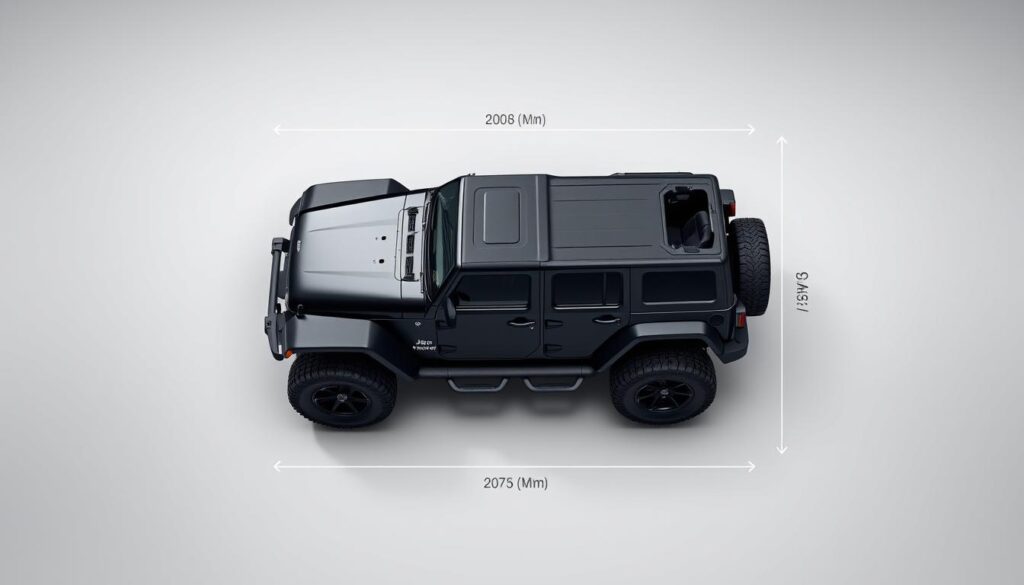
Knowing the jeep wrangler’s weight helps drivers choose wisely. It affects performance, fuel use, and what the vehicle can do. Different Wrangler models have different weights:
- 2-Door Wrangler Sport: About 3,970 pounds
- 4-Door Wrangler Unlimited Sport: Around 4,449 pounds
- Rubicon Models: A bit heavier because of extra off-road gear
The jeep wrangler’s curb weight depends on a few things:
- Body style (2-door vs. 4-door)
- Trim level
- Optional equipment
- Specific generation model
Pro tip: Always check the manufacturer’s specs for the exact weight of your Wrangler model.
| Wrangler Model | Approximate Curb Weight |
|---|---|
| Sport 2-Door | 3,970 lbs |
| Sahara 4-Door | 4,525 lbs |
| Rubicon 4-Door | 4,649 lbs |
Weight affects how a vehicle performs, like how fast it goes, how it handles, and how much fuel it uses. The jeep wrangler’s curb weight is important for a good driving experience.
Evolution of Jeep Wrangler Weight Through Generations
The Jeep Wrangler has changed a lot in weight and size over the years. These changes show how car engineering, safety, and design have improved.
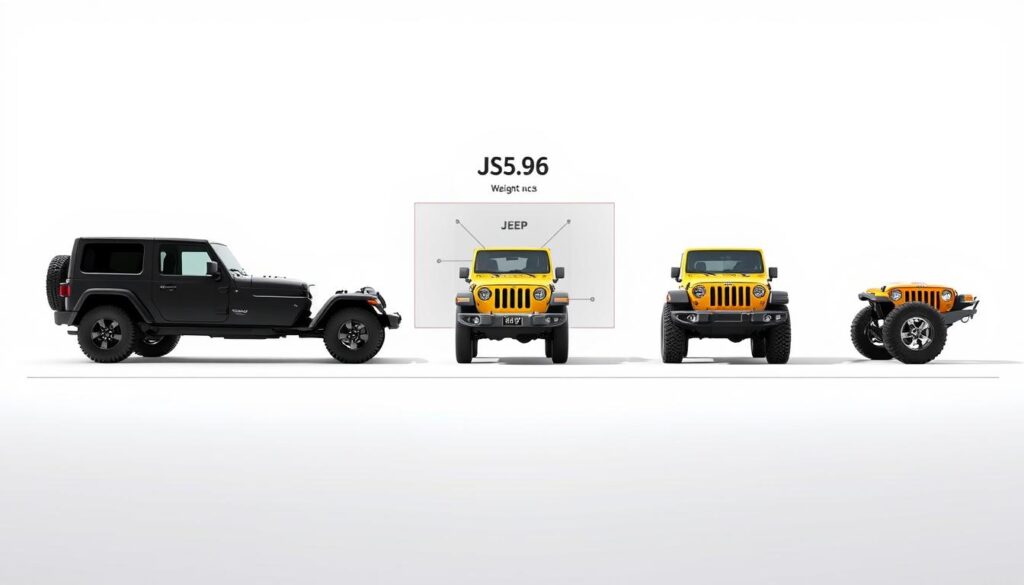
Looking at how the weight has changed helps us understand the car’s growth and how it works. The details of the Jeep Wrangler tell a story of car innovation.
JK Generation (2007-2018)
In the JK generation, Jeep Wrangler’s weight was adjusted. Two-door models weighed between 3,760 and 4,150 pounds. Four-door Unlimited models were heavier, from 4,150 to 4,550 pounds.
- Two-door models: Lighter construction
- Four-door Unlimited: Increased structural integrity
- Material composition: Mix of steel and aluminum
JL Generation (2018-Present)
The JL generation brought new ways to make the Wrangler lighter. Jeep used aluminum body panels and strong steel to make the car lighter but stronger.
Here are some key weights for the JL generation:
- Sport models: Approximately 3,955 pounds
- Rubicon models: Around 4,449 pounds
- Sahara trims: Roughly 4,258 pounds
Weight Changes Over Time
Jeep has focused on making the Wrangler lighter. They used new materials and designs to improve fuel efficiency without losing strength.
The trend shows a gradual reduction in vehicle weight while maintaining robust performance capabilities.
Weight Comparison: 2-Door vs. 4-Door Wrangler Models
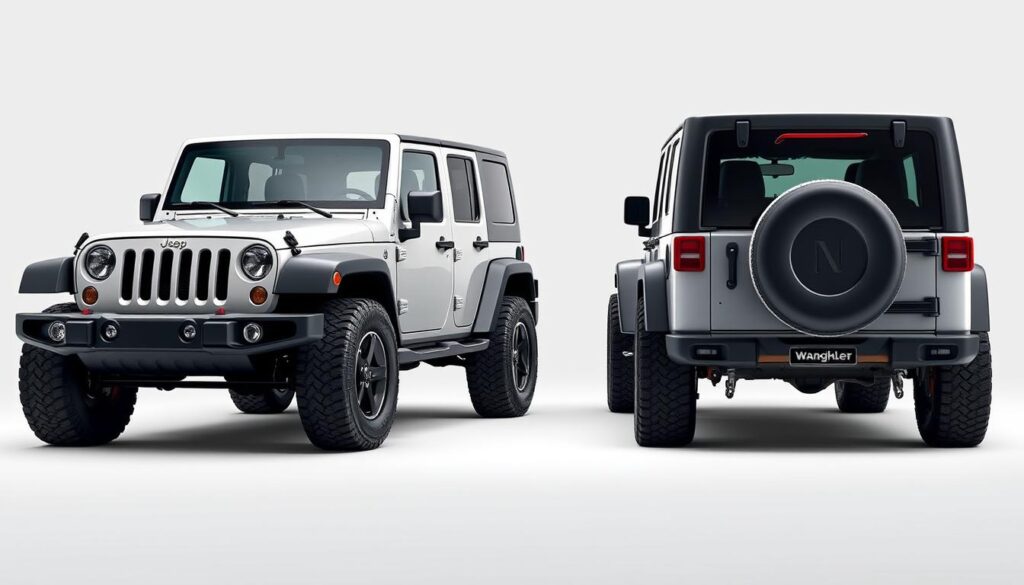
The Jeep Wrangler comes in two styles, each affecting its weight. It’s important to know the weight difference between 2-door and 4-door models. This helps buyers make the right choice.
Structural differences are key in determining weight. The 4-door Wrangler Unlimited is heavier. This is because it has more parts and more room for cargo.
| Wrangler Model | Approximate Weight (lbs) | Key Differences |
|---|---|---|
| 2-Door Sport | 3,970 | Lighter, more compact design |
| 4-Door Unlimited Sport | 4,449 | Increased wheelbase, more passenger space |
Weight affects several important areas:
- Fuel Efficiency: 2-door models usually get better gas mileage
- Maneuverability: The lighter 2-door is more agile
- Off-Road Capability: Each model has different weight distribution
Deciding between a 2-door and a 4-door Wrangler depends on what you need. 4-door models are great for more space and practicality. But, 2-door versions are better for a more agile drive.
Impact of Trim Levels on Jeep Wrangler Weight
The Jeep Wrangler’s weight changes with each trim level. This is because of different design features and equipment packages. Knowing these weight differences helps buyers choose the right Jeep Wrangler model.
Jeep Wrangler specifications show how weight affects performance and capabilities. Each trim level has unique features that add to the vehicle’s mass.
Sport vs. Sahara Weight Characteristics
The Sport trim is the lightest in the Jeep Wrangler lineup. It has:
- Minimal additional features
- Lighter standard equipment
- Less luxury accessories
Sahara trims are heavier because of more comfort and tech features.
Rubicon Model Weight Specifications
Rubicon models have special off-road parts that make them heavier. These parts improve durability and performance:
- Strong axle designs
- Advanced suspension systems
- Strengthened chassis components
Special Edition Models
Limited edition Wranglers have unique weights due to special equipment and design changes.
| Trim Level | Approximate Weight | Key Weight Factors |
|---|---|---|
| Sport | 4,150 lbs | Minimal additional equipment |
| Sahara | 4,350 lbs | Enhanced comfort features |
| Rubicon | 4,450 lbs | Off-road specialized components |
Note: Weight specifications may vary slightly depending on specific model year and configuration.
Weight Distribution and Performance
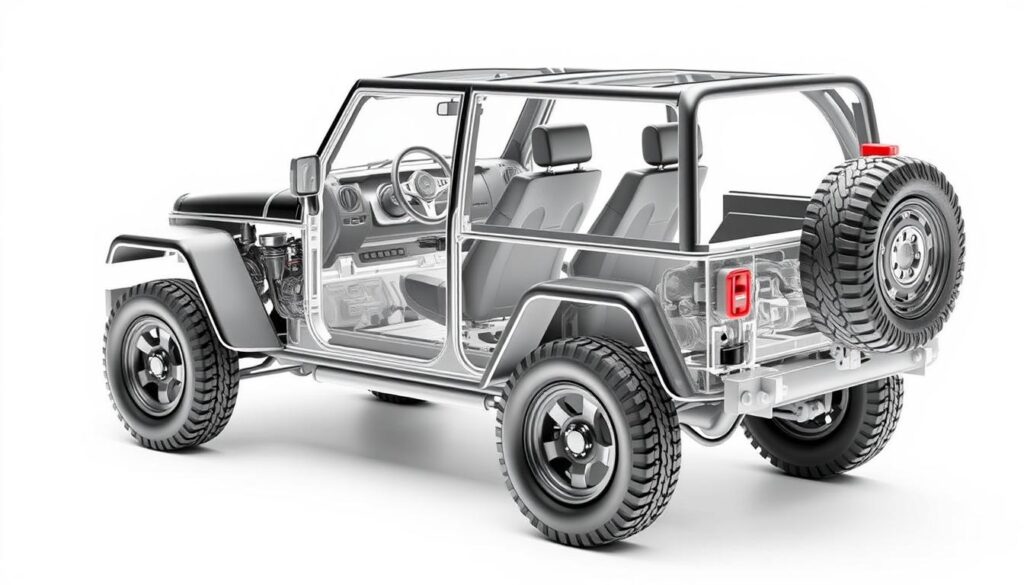
The Jeep Wrangler’s weight distribution is key to its performance. Knowing this helps drivers see the car’s engineering and capability.
Weight distribution affects the Wrangler’s handling and stability. Jeep wrangler technical data shows the right balance between the front and rear axles is important. It makes the vehicle perform well in different driving situations.
- Front-to-rear weight ratio typically ranges between 52/48 and 55/45
- Balanced weight distribution enhances cornering stability
- Improved weight management reduces body roll during turns
Off-road performance also depends on weight distribution. Jeep wrangler details reveal that placing weight strategically improves traction and control on tough terrains.
| Performance Aspect | Impact of Weight Distribution |
|---|---|
| Acceleration | Balanced weight enables smoother power transfer |
| Braking | Even weight reduces stopping distance |
| Cornering | Minimizes lateral movement and improves handling |
Advanced suspension systems and strategic weight placement help the Wrangler perform well in many driving environments.
How Weight Affects Fuel Economy
The jeep wrangler’s weight is key to its fuel efficiency. Drivers know that how much a vehicle weighs affects fuel use. A heavier jeep wrangler makes it harder to save on fuel, so managing weight is vital.
Vehicle weight affects fuel use in several ways. More weight means more energy to move and stay moving, which uses more fuel. This is true, even more so in city driving where stopping and starting is common.
City vs. Highway Fuel Consumption
Different places to drive show different fuel use challenges:
- City driving is less fuel-efficient because of all the stopping and starting.
- Driving on highways can be better because the speed is more steady.
- Jeep Wranglers might see a 2-4 mpg difference in city vs. highway driving.
Weight Reduction Tips
There are ways to make your jeep wrangler lighter and save on fuel:
- Take out any extra stuff and accessories you don’t need.
- Use lighter parts instead of the heavy ones.
- Think about upgrading to aluminum or composite materials.
- Keep your tires at the right pressure.
By managing weight smartly, Jeep Wrangler owners can make their vehicle more efficient and save on fuel.
Weight Considerations for Off-Road Performance
The weight of a Jeep Wrangler is key for off-road adventures. It affects how the vehicle moves over tough terrain. Jeep Wrangler technical data shows that where the weight is matters a lot.
Off-road success depends on a few weight-related things:
- Ground clearance
- Approach and departure angles
- Vehicle stability
- Suspension response
Heavier Wranglers are more stable on rocky paths. Lighter ones are easier to move around. The best weight depends on the off-road situation.
| Terrain Type | Ideal Weight Characteristics | Performance Impact |
|---|---|---|
| Rock Crawling | Moderate weight with low center of gravity | Enhanced traction and stability |
| Sand Driving | Lighter weight with wider tires | Improved mobility and reduced sinking |
| Mud Terrain | Balanced weight with robust suspension | Better ground clearance and momentum |
For off-road pros, weight is more than a number. It’s a key factor in how well a vehicle performs. Making smart changes can help a Wrangler handle different off-road challenges better.
Weight Implications for Modifications and Upgrades
Jeep Wrangler modifications can change the vehicle’s weight and how it performs. It’s important to know how aftermarket parts affect the vehicle’s weight and safety.
When you add upgrades to your Jeep Wrangler, each change affects its weight. It’s key to think about how these parts will change the vehicle’s total weight and how it will perform.
Common Aftermarket Additions
- Lift kits (can add 50-100 lbs)
- Larger off-road tires (approximately 20-40 lbs per tire)
- Winches (40-100 lbs)
- Roof racks and cargo systems (30-80 lbs)
- Heavy-duty bumpers (50-150 lbs)
Weight Management Strategies
To manage the weight of your Jeep Wrangler, you need a smart plan. Choose lightweight materials and pick upgrades that improve performance without adding too much weight.
- Use aluminum or composite components
- Balance heavy additions with weight reduction in other areas
- Consider the impact on fuel efficiency
- Recalibrate vehicle systems after significant modifications
Pro tip: Every 100 lbs added can reduce fuel efficiency by up to 2%, making weight management critical for performance and economy.
Legal Weight Restrictions and Guidelines
Knowing the legal weight limits for your Jeep Wrangler is key for safe driving. Jeep Wrangler specs include weight guidelines every owner needs to know.
The Gross Vehicle Weight Rating (GVWR) is the max weight a vehicle can handle, as set by the maker. For Jeep Wrangler sizes, this includes:
- Vehicle’s base weight
- Passenger weight
- Cargo load
- Additional equipment
State and federal laws require strict following of these weight limits. Going over the GVWR can lead to:
- Potential legal penalties
- Increased vehicle wear
- Compromised safety
- Voided vehicle warranty
Different Jeep Wrangler models have different weight limits. Always check your vehicle’s manual for exact weight guidelines. Local transport departments can also share regional rules that affect your Wrangler’s use.
Responsible owners should check their vehicle’s weight often. This is important after making changes or carrying heavy loads to stay within legal limits.
Conclusion
Knowing how much a Jeep Wrangler weighs is key for anyone interested in owning one. The weight changes a lot depending on the model, trim, and setup. Each type, from the classic two-door to the spacious four-door, has its own weight that affects how it drives and handles off-road.
The weight of a Jeep Wrangler is more than just a number. It’s important for how the vehicle moves. Things like the trim, any custom parts, and how you plan to use it all matter. When choosing or upgrading your Wrangler, think about these factors to get the best fit for you.
Whether you love off-roading or just driving around town, knowing about Jeep Wrangler weight is helpful. Finding the right balance between weight, performance, and fuel use is important. This knowledge lets you get the most out of your Wrangler, making your drives better suited to your needs.
The Jeep Wrangler is known for being versatile and adaptable. Its weight shows how it can handle different environments, from city streets to rough trails. By understanding this, owners can make the most of their vehicle, balancing performance, comfort, and practicality.

